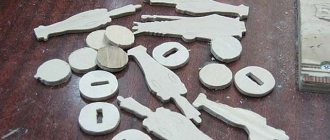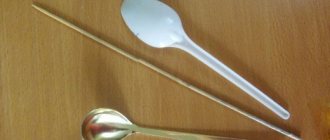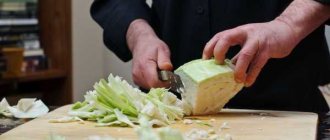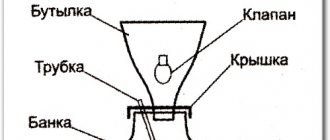Eastern traditions have always attracted people with their mystery, refined and subtle culture, brightness and uniqueness. And this applies to almost everything, especially architecture. Quite often one can observe in various countries individual elements of such a design, which stand out for their lush luxury and richness of mosaic decoration, pretentiousness of patterns, severity of wooden ornaments, unusually thin and seemingly almost weightless, fragile elements. What is so attractive about a Chinese roof?
Chinese architecture has always attracted people with its extraordinary geometry.
In this article we will reveal all the main details of the construction of such a roof, and our experts will give some important tips that will help facilitate the construction of such an unusual, but very attractive structure. Let’s figure out whether it’s possible to make such a roof with your own hands or whether it’s better not to risk it.
Features of the view
The Chinese roof is a unique design solution, which is rightfully considered the hallmark of the eastern design direction. Its appearance is significantly different from the triangular gable roofs that are classic for our area. A house with a Chinese-style roof immediately acquires oriental exoticism. The characteristic features of this design are:
- Curved edges pointing towards the sky. The roof eaves, curving at an incredible angle, give the structure a unique look, visually reminiscent of oriental temples, pagodas or tea houses.
- Wide, massive cornices. Chinese-style roof overhangs extend at a great distance from the outer walls of the building, protecting from torrential downpours, snow and wind, in other words, all negative weather phenomena.
- Tiles of a special shape. To cover a roof in the Chinese style, cylindrical ceramic tiles are used, thanks to which it is convenient to design corner joints and the ridge of the structure.
Note! Chinese-style roofing has one distinctive feature - the absence of the classic rafter system characteristic of gable, hip roofs. Its frame is a post-and-beam structure that reliably distributes and bears the weight of the roofing pie.
Appearance and finish
To cover Chinese roofs, classic cylindrical ceramic tiles are used. Using this type of roofing material allows you to more carefully design the joints between the slopes and the ridge. In addition to the upward curved eaves, the unique look of the roof is given by:
- Qiang shou figurines. A special rectangular profile with figures depicting various mythical creatures is used to design joints. They not only protect the roof from water penetration in the most vulnerable places, but also give it a unique, recognizable appearance.
- Ridge profile with clamps. The ridge profile with ceramic clips is the most recognizable element of Chinese architecture. Thanks to him, the roof becomes “horned”.
Fundamentally important! Before making a Chinese roof, it is necessary to take into account that ceramic tiles, a massive frame and a wide curved cornice significantly increase the weight of the structure. In order to support the weight of the cornice, a special system of brackets is installed, called dougong in classical Chinese architecture.
Should I choose original or imitation?
A do-it-yourself Chinese roof is an aesthetic and elegant option for a country house, gazebo or commercial buildings intended to house cafes and restaurants. But, if you strictly adhere to architectural traditions, you may encounter difficulties, since the post-beam structure has a highly complex structure that requires a lot of financial and physical costs. In order to reduce costs, it is possible to imitate a classic Chinese roof using simpler design solutions and modern waterproofing materials. The original and imitation differ in the following factors:
- Classical Chinese roofing is characterized by the absence of a simple rafter system, since in most cases in buildings in China, support columns are used instead of load-bearing walls. Such a device allows minimizing the negative consequences of seismic activity. The post-and-beam system is intentionally designed to withstand intense loads.
- The imitation of a Chinese roof is distinguished by the fact that it is built on the basis of a simple rafter system and lighter, flexible roofing materials, which allow it to fit around the frame structure. Visually, it quite accurately imitates the appearance of a Chinese roof, but is significantly cheaper.
Fundamentally important! Before you build a house with a Chinese roof, you need to decide whether you will make an imitation or a classic version. Experienced craftsmen are confident that for our area, where there is virtually zero seismic activity, it is better to limit ourselves to imitation, since it also looks impressive, but is much more ergonomic from an installation standpoint.
Harry Potter in the cinema. 4. How were Hogwarts, the Dementors and the Hippogriff created?
Go to the previous part of the article
For example, not all viewers realized that most of the interiors of Hogwarts Castle were made from scratch. They were made from plaster and wood, and then painted to the desired texture.
Dragon Hungarian Horntail. Still from the Harry Potter film franchise Photo: kinopoisk.ru
In addition, all these rooms were filled with many bizarre things. So, about three hundred “magical” exhibits with their original names were created for the Weasley twins’ store. Most of them the audience does not even have time to look at, but on a subconscious level there is a feeling of depth and authenticity of this fictional world...
Hogwarts. Still from the Harry Potter film franchise Photo: kinopoisk.ru
For the underwater scenes of the fourth film, the studio built a huge tank with water and a blue screen, deciding that filming in a real, cold and dark lake was inconvenient and unhealthy. In addition, the tank came in handy more than once - for “The Half-Blood Prince” (the scene in the cave lake) and “The Deathly Hallows” (where Harry falls through the ice).
One of the most technically challenging scenes in filming the film was the ride of a magical three-decker bus through London at night. To create the impression that the bus was rushing at great speed, the surrounding cars were forced to drive no faster than 13 km/h (well, and then the film was sped up).
A three-decker Night Knight bus rushes between two double-deckers. Still from the Harry Potter film franchise Photo: kinopoisk.ru
As for the computer characters, almost all of them turned out excellent - house elves, dragons, infernals climbing out of the lake...
Dobby the Elf. Still from the Harry Potter film franchise Photo: kinopoisk.ru
The only computer character that I frankly didn’t like was the werewolf from the 3rd film. It turned out to be too unnatural and instead of scaring, it made me laugh more.
Werewolf Lupin. Still from the Harry Potter film franchise Photo: kinopoisk.ru
Sometimes the creators of fantastic images had to show a fair amount of ingenuity to make fantastic creatures look unexpected and fresh. As is the case with mermaids and mermaids, whose faces were given fish-like features.
Mermaid. Still from the Harry Potter film franchise Photo: kinopoisk.ru
They spent a particularly long time tormented by the images of dementors—creepy creatures in black hoods that suck the joy out of people. When I read the book, I could not get rid of the feeling that I was imagining either the Nazgul from “The Lord of the Rings” or the common image of death (except without the scythe).
The director of The Prisoner of Azkaban, Alfonso Cuaron, understood this and wanted to get as far away from such stereotypes as possible. As a result, the dementors in his film turned into ethereal creatures that float in the air with fluttering flaps of cloaks. This did not make them any less creepy - on the contrary, their appearance was somewhat like lepers with rotting flesh.
Interestingly, at first Cuaron made dolls and even immersed them in water to convey fluid plasticity. Unfortunately, this method turned out to be impractical, and the Dementors were made on a computer.
Dementor over the victim. Still from the Harry Potter film franchise Photo: kinopoisk.ru
A huge amount of effort and time was spent on creating the hippogriff. Both computer graphics and an automated model were used here. The developers had to rack their brains to ensure that this cross between a bird and a horse moved in the frame as naturally as possible.
By the way, not everyone notices that during the first appearance of the hippogriff on the screen, this animal defecates like a horse. This was probably the first film where a computer character performed a prosaic act of defecation.
Hippogriff. Still from the Harry Potter film franchise Photo: kinopoisk.ru
But they decided not to use computer graphics to create the giant spider Aragog, and, I must say, the doll turned out to be very convincing.
In addition to puppet and “digital” models, many real animals took part in “Harry Potter,” each of which had its own trainer.
For example, Gary Gero was responsible for training birds - owls and crows. Yes, yes, 80% of the owls in the film were natural. They were actually trained to fly in the right direction and carry mail cargo like the Nimbus 2000 broom. It was not easy, because owls are not particularly smart. It’s not for nothing that 3-4 birds were used in the role of Bukli’s white owl.
Harry with Hedwig the Owl. Still from the Harry Potter film franchise Photo: kinopoisk.ru
Other trainers were responsible for Ron's rat, Hermione's cat and the bats in Hagrid's house. To make the cat more gloomy, he even had to be made up.
They even brought a rare pygmy hippopotamus to the set of Prisoner of Azkaban. He can be seen in one of the "living" paintings of Hogwarts, in which the Fat Lady is hiding from Sirius Black.
Finally, we cannot ignore the wonderful music written by none other than John Williams, the creator of the soundtracks for the films “Jaws,” “Star Wars,” “Indiana Jones,” “Home Alone” and many others. One of the themes written for "Harry Potter" - "Headlock's Theme" - was liked by everyone so much that it became the theme song for the entire franchise.
In 2002, Williams was nominated for an Oscar for his score for Harry Potter. However, he did not receive another statuette for his collection (the composer already had five Oscars), losing the prize to Howard Shore, who wrote the soundtrack to The Lord of the Rings.
To be continued…
Tags: filming, Harry Potter
Installation technology
Skilled craftsmen claim that a roof for a house or gazebo in the Chinese style is a labor-intensive, but completely real constructive solution. The key to the reliability and durability of the structure is the accuracy of calculations and the use of high-quality materials. Installation is carried out in the following sequence:
- The first stage of creating a Chinese-style roof is planning. In order for the structure to support its weight, you need to calculate the load that is placed on it.
- First of all, after laying the Mauerlat, the vertical supports are installed exactly in the center; they must be strong enough and strong enough.
- After this, second boards are installed, one end of which rests against the Mauerlat, and the other in the middle of the vertical post.
- The next board rests with one end against the middle of the second beam, and with its apex against the top point of a vertical support post located in the center.
- Upon completion of installation of the support beam structure, a sheathing is installed on which waterproofing is laid.
- At the time when the installation of waterproofing and sheathing is completed, it is possible to proceed to laying the roofing material. In most cases, for the construction of Chinese-style roofs, bitumen shingles are used, which bend well and therefore easily fit on curved slopes.
Please note that the wide eaves of a Chinese-style roof must be hemmed from below to prevent the penetration of liquids, cold air and snow. In addition, it is possible to decorate the finished roof with classic figures.
How to sew a fiek with your own hands
Once in the Montesorri group there were days of familiarization with the traditions and customs of different countries, and for every two or three days it was necessary to build something similar to the next national costume (China, Russia, American Indians, Scotland). It turned out to be a very exciting and fun activity. And, as it turned out, it is not at all necessary to spend a lot of time and money to make the costume interesting.
For the Russian Ivanushka, a bright red braid was sewn onto an ordinary white T-shirt and a belt was made from it; bicycle shorts of a suitable color completed the picture. And if you add a cap with a flower and a children's accordion or accordion into the bargain, then you will simply be the first guy in the village.
For the Scot, a beret was quickly made from pieces of leftover blue fleece using a zigzag stitch. A pompom is made from red fleece (a long piece of fabric is cut with fringe and pulled together into a pompom). The handbag and belt are ordinary, from a summer set with Bermuda pants. Almost every boy has a sword and a gun. T-shirt - by color. Knee socks - dark in color, matching (long socks or tights are suitable). The skirt is made from a piece of checkered linen. Folds on the left and right, going from the front to the back (The more fabric, the deeper the folds). The fabric is sewn and there is an elastic band around the waist. Over the shoulder is another piece of plaid fabric (imitation plaid), fastened at the waist.
For the Chinese, a cone hat has a strip of paper glued inside, folded to fit the head, so that the hat does not fall off and holds well.
The Indian headdress is made from 3 commercial feather decorations (available at birthday stores). They are fastened together with a regular stapler (the ends of the staples are on the front side so as not to scratch your face). In order for the headdress to stay on the head, a regular elastic band is attached at the level of the temples. If there are no feathers, you can make them out of paper and paint them (cut strips of paper, fold them lengthwise and cut the edges with fringe, round the tips of the feathers, paint them and glue them into a semicircle or the letter “P” according to the shape of the face, and the longer the “legs” of the letter "P", the more majestic the headdress will be (like that of a leader). The decorations hanging from the sides are cut out of foil and cardboard - crescents, circles, rings, stars).
The teeth of a GRIZZLY bear were made from I GLAY clay in two colors - white and brown - and assembled onto a string. My mother's old colorful T-shirt was used for the poncho; it was properly torn up with fringe. Fringed strips of fabric of a similar color were sewn onto the pants. Socks imitating moccasins were pulled over the shoes. And if you add a gun, a bow and arrows, then the Indian will be quite real.
For a cowboy, the most important thing is the hat. Purchased sets include a sheriff's star, a hat, a Colt and even a bandolier.
The cheapest sets include a soft plastic hat (as in the photo) and a sheriff's badge. You can borrow a matching autumn felt hat from your parents. A mandatory attribute is a neckerchief. The vest can be made from anything, even decorated with fringe. Jeans, a belt, a gun, a Colt and, if you have one, a plaid shirt.






